Frequently asked questions
Why zintaglio.com?
Because we get the illusion of Z (depth) from scintilla (glints) on intaglio (carved surfaces). Say that fast enough and you get zintaglio.
Why are some of the photos colorful?
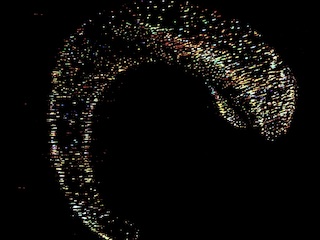 The edges of the optical surfaces add some diffracted
light to the image. Very heavily machined plates can act like irregular diffraction gratings under a point light source, especially when viewed from the side. Due to idiosyncracies of digital camera sensors, sometimes this shows up in a captured image or video, and sometimes it doesn't. To human eyes, the plates look quite different: The
glints usually appear pearlescent or iridescent and the backgrounds appear.
silvery.
The edges of the optical surfaces add some diffracted
light to the image. Very heavily machined plates can act like irregular diffraction gratings under a point light source, especially when viewed from the side. Due to idiosyncracies of digital camera sensors, sometimes this shows up in a captured image or video, and sometimes it doesn't. To human eyes, the plates look quite different: The
glints usually appear pearlescent or iridescent and the backgrounds appear.
silvery.
Where did the idea come from?
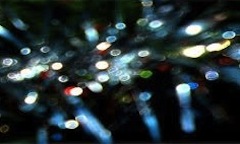
Specular holography was born in the Artesia Lounge, a long-lost
Chicago blues club that was decorated year-round in holiday tinsel.
After a set one night I took off my glasses to rub my eyes and noticed
that the blurred tinsel presented a different pattern of glints to
each eye — one of the ingredients of autostereoscopy. I cadged
a pen and started working out the geometry for shaping tinsel to so
that the glints would produce a proper 3D percept. By the next day I
had a solution, but a weekend spent trying to prototype in metal foils
came to naught.
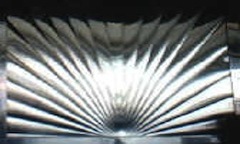
The work lay forgotten for many years until a serendipitous dinner
at Watertown's Deluxe Diner, where I noticed that the diner's pressed
stainless steel panels also present different images to each eye. It occurred to me that the optics I wanted should be carved out of metals and plastics, but, it turned out, at the time even high-end CNC machines were not sufficiently fast and precise. However, thanks to Moore's law, a few years later that obstacle was gone.
Getting a viable process took many nights spent solving related
problems in differential geometry, combinatorial optimization, and high-precision machining. And lots of trial and error to learn how to coax good imagery from this new medium.
Is it holography?
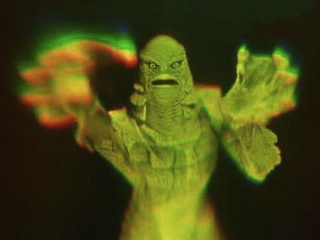
Yes and no. Yes, in the sense that every viewpoint sees an exactly appropriate image of
a 3D scene (i.e., no discretization). And no, if you believe that holography must depend on wave interference. Generally the differences are more interesting than the similarities: Conventional holography
uses wave interference to reproduce the light field of existing scene, and is most akin to photography.
Specular holography uses ray optics to construct a light field for an imagined scene, and is more akin to
sculpture. Conventional holograms (typically) show in garish colors.
Specular holograms scintillate in pearlescent colors. Conventional
holography depends on delicate wavelength-scale structures that limit
piece size and require careful indoor curation. Specular holography
is mediated by robust optical surfaces that can be scaled up to clad
buildings:
Is it jeweling?
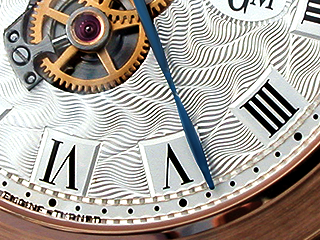
Like jeweling, I am using intaglio (metal-carving) to manipulate light. But in an almost opposite process.
Jeweling (a.k.a. engine-turning) is a centuries-old art consisting of ornamental shading patterns that are cut into metal with rotary engraving or abrading machines. The cuts are singly-curved surfaces. Sometimes they glint, and sometimes the motion of the glints is eye-catching, but generally jewelers design to avoid glints, which distract the eye from their work. In specular holography, the controlled motion of glints is the whole point, and therefore determines the whole design, all the way down the unique doubly-curved 3D shape of each individual engraved cut. Not surprisingly, specular holograms often work best when the resulting complex of cuts does not produce shading patterns.
Of historical interest: Around 1930 the sculptor Hans
Weil proposed that variously oriented straight reflectors could be arranged to display different pictures to different viewpoints, and he commissioned a simple example from a jeweler. Weil then spent many years looking unsuccessfully for a generalization that would produce 3D images; somehow he passed through the jeweler's workshop without seeing an important clue to the solution.
Is it scratch holography?
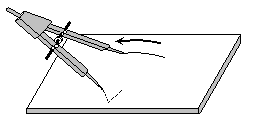
"Scratch holography" can be understood as an approximation of one of the optics I use, in the same sense (and with roughly the same accuracy) that glass marbles approximate eyeglass lenses for far-sighted people. Scratch holography exploits the way glints travel on the rim of circular scratches, which are the simplest possible approximation of the correct optical surfaces. The approximation is acceptable for some small range of angles, and "breaks" outside of that range. So scratch holograms are typically dim and distorted outside of a very narrow field of view, such that the
illusions of depth and occlusion rapidly collapse. In contrast, specular holography
uses doubly-curved mirrors (from a family of high-degree curves) to deliver rigid, undistorted 3D images to a wide
field of views. The mirrors are usually fabricated as Fresnel-like
surfaces (e.g., in the horse animation) or
as very fine curved grooves with specially shaped cross-sections (e.g.,
in the knots).
Are those fingerprints?
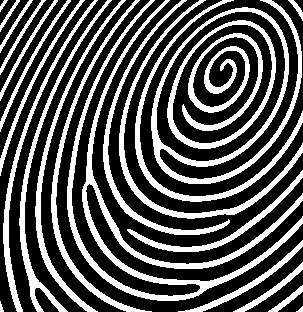
Yes, it turns out there are at least three elegant ways to generate
synthetic fingerprints, of which nature chose the least economical,
computationally. That alone makes it a very interesting class of
visual textures.
On to who.
See:
lenses
knots
nature
humans
surfaces
motion
720
etc
.
© 2008-2010 Matt Brand. All rights reserved. Trademark & patents pending.
 The edges of the optical surfaces add some diffracted
light to the image. Very heavily machined plates can act like irregular diffraction gratings under a point light source, especially when viewed from the side. Due to idiosyncracies of digital camera sensors, sometimes this shows up in a captured image or video, and sometimes it doesn't. To human eyes, the plates look quite different: The
glints usually appear pearlescent or iridescent and the backgrounds appear.
silvery.
The edges of the optical surfaces add some diffracted
light to the image. Very heavily machined plates can act like irregular diffraction gratings under a point light source, especially when viewed from the side. Due to idiosyncracies of digital camera sensors, sometimes this shows up in a captured image or video, and sometimes it doesn't. To human eyes, the plates look quite different: The
glints usually appear pearlescent or iridescent and the backgrounds appear.
silvery.




